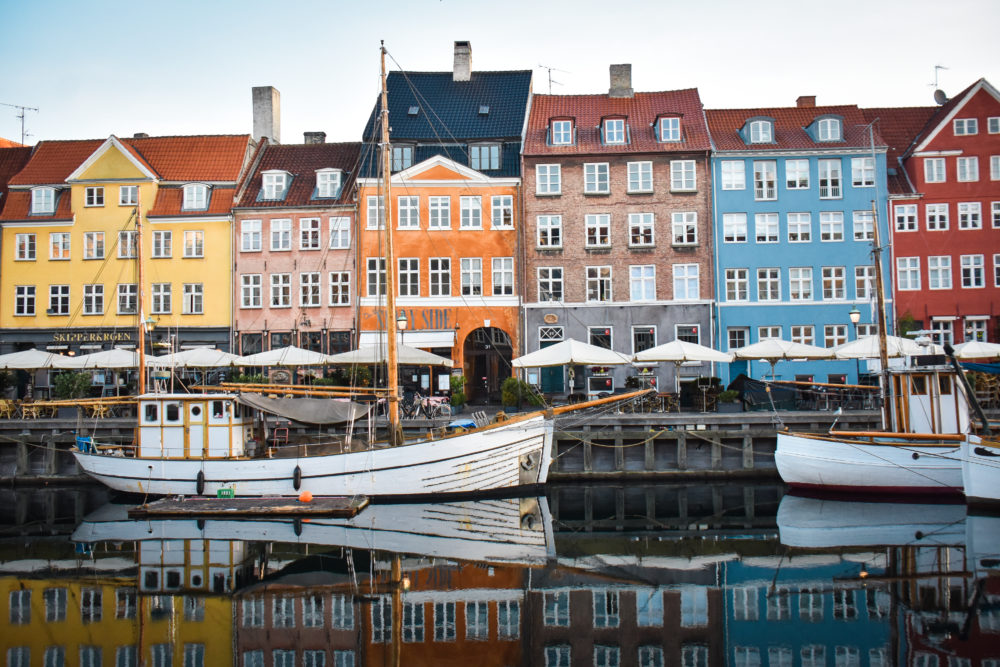October 2022: Throughout my travels, the Nordik country of Denmark somehow managed to escape my sights. The same cannot be said about its territories, the Faroe Islands and Greenland but the actual country itself had evaded me up until now. On a 10-day trip around the southwestern Mediterranean, I decided to squeeze in a short 1-night two-day trip to Copenhagen since it was a convenient short flight away from our trans-Atlantic flight to London. I’m glad I did because Copenhagen surprised me and exceeded my expectations. The city, its canals, historical buildings, monuments and quirky artistic, hippy District of Christiana did not disappoint.
About Denmark
Denmark is a Scandinavian country that sits on top of Germany just below its Nordik neighbors Norway and Sweden. The Danes like their Scandanavian neighbors were Vikings during the Middle Ages and ransacked much of Europe. Denmark went on to rule much of northern Europe and developed a successful mercantile industry of trade and commerce, which is partly due to the country’s strategic location at the entrance to the Baltic Sea. Through the discoveries of Viking era explorers, Denmark added the Northern Atlantic territories of Greenland and the Faroe Islands. Today Denmark with its beautiful countryside located on the Baltic Sea and its extensive government social programs had been voted as one of the so-called happiest countries of the world. The capitol city is Copenhagen.

Location of Copenhagen
My wife, mother-in-law and I arrived in Copenhagen in the evening and stayed in the historical District at the Huxley Hotel near the series of canals of Nyhavn Harbor. Upon arrival we dropped off our bags and explored the city on foot. My two favorite times to explore any European City is late at night and early in the morning when the tourists are asleep, and the history of a city feels more tangible. We visited a bar and had a Carlsberg-Danish beer but were not successful in finding any local eateries that were still open except for MacDonalds, which was a thriving meetup place for young party goers.
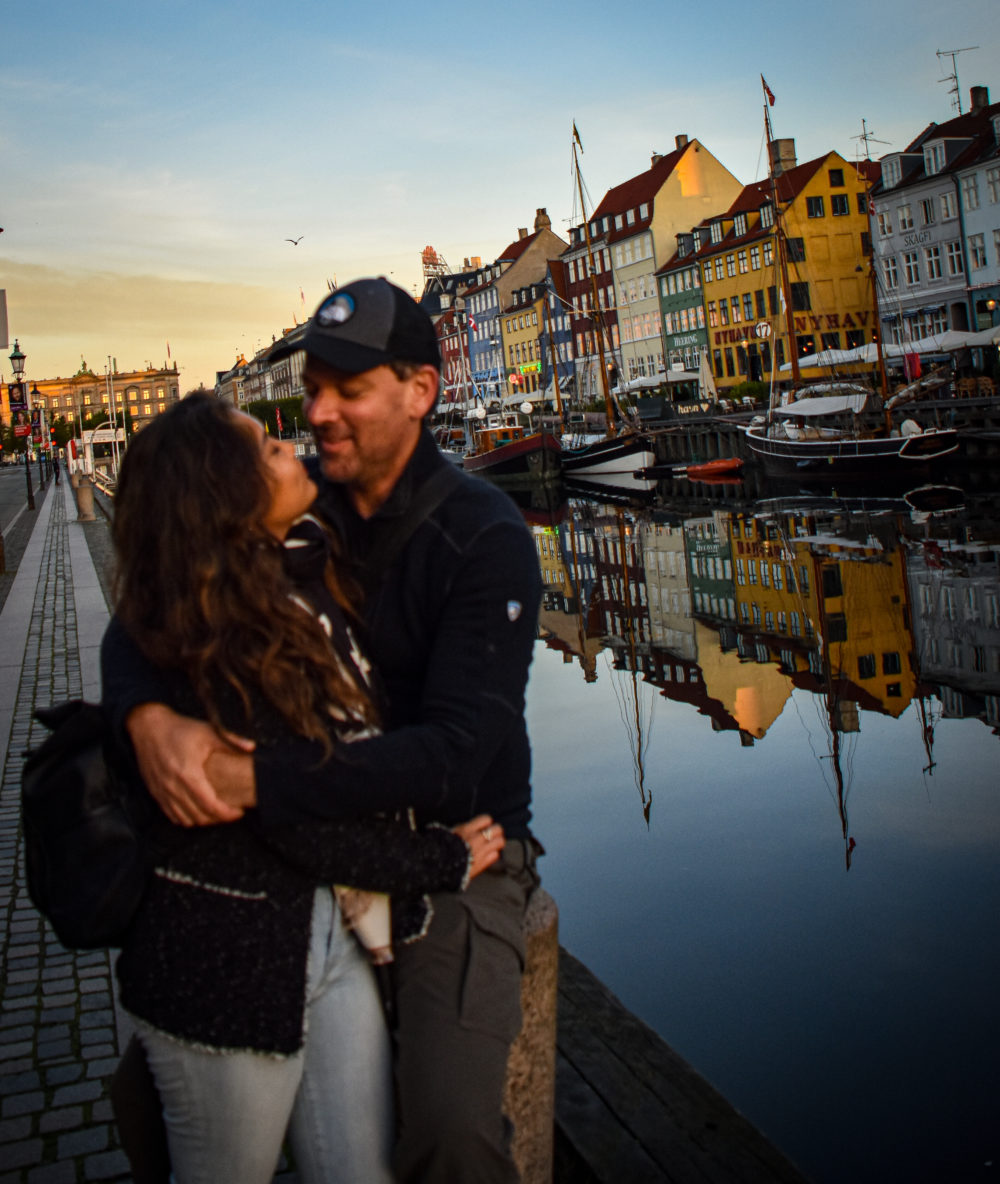
Paula and I at Nyhavn Harbor
Then after a night of little sleep and motivated by the eagerness to explore, we awoke early before sunrise to walk and explore the city again. The first place we walked to was Nyhavn Harbor, where the old town of Copenhagen is located along canals of the waterfront that connects to the Baltic Sea. The canals of Copenhagen are very extensive and were inspired by a previous ruler who visited Amsterdam. One of the houses of Nyhavn Harbor is the childhood home of Hans Christian Anderson, the famed Danish fairy tale author.
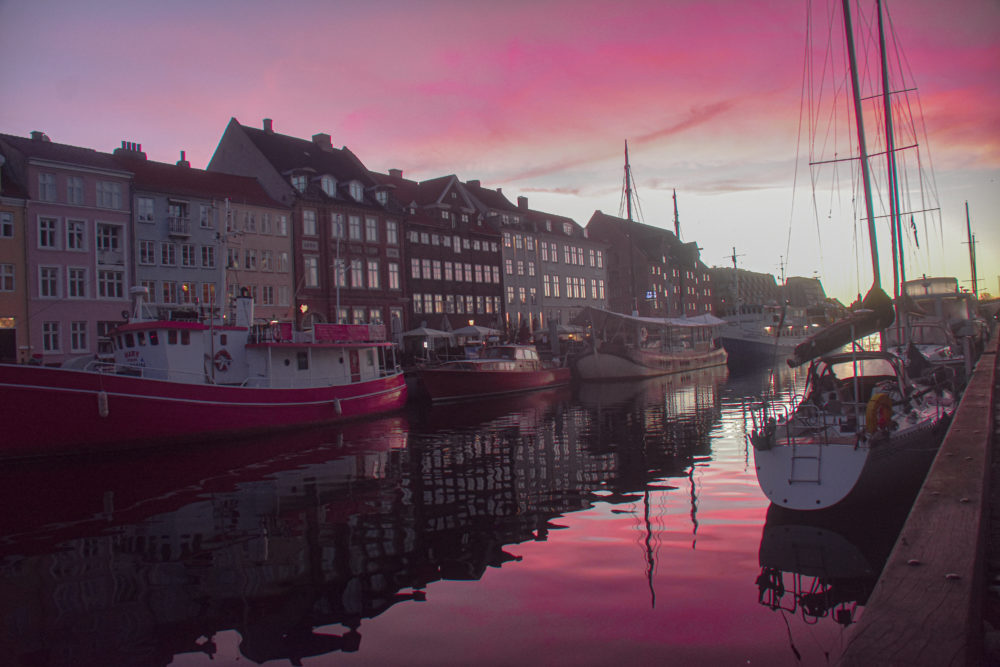
Sunrise at Nyhavn Harbor
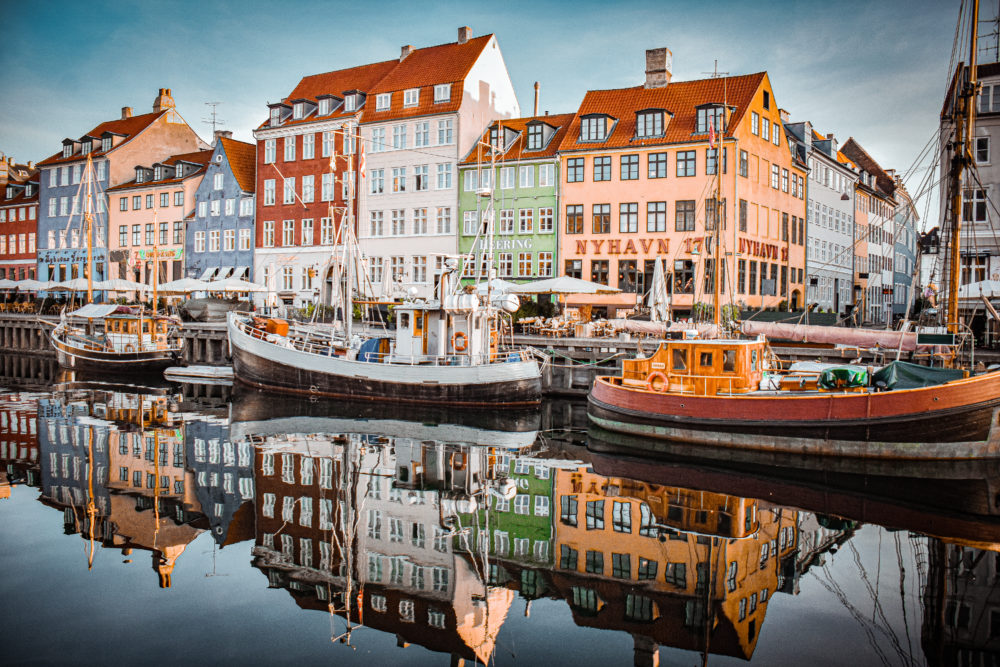
Sunrise at Nyhavn Harbor
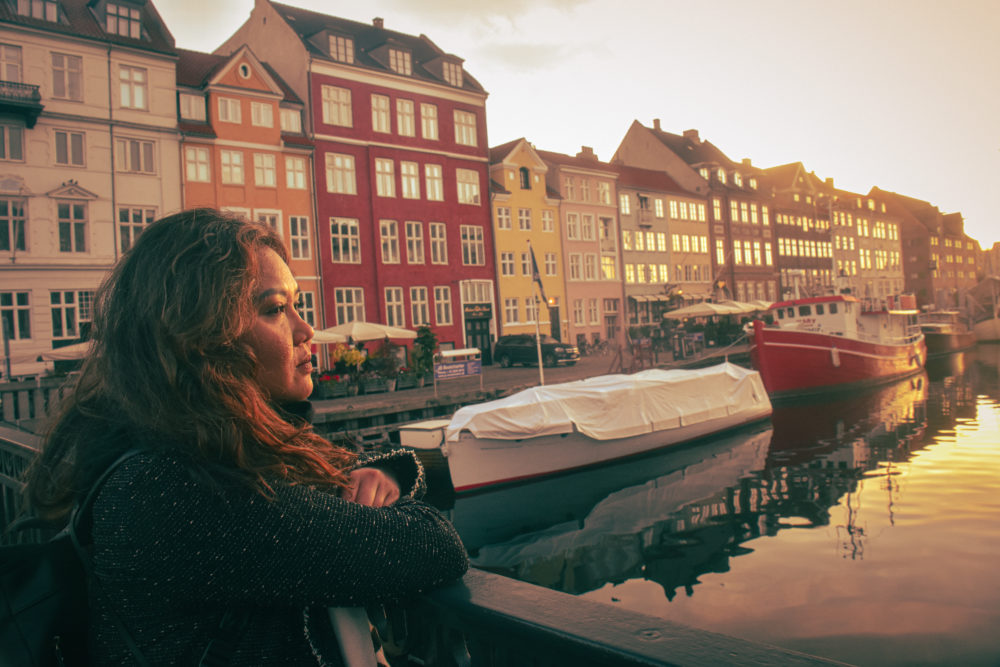
Paula at Nyhavn Harbor
Long before the first breakfast cafes opened, and tourists began to surface, we were admiring the unique architecture of the city, especially the old brick industrial and military buildings and enjoying its cool Autumn seaside weather.
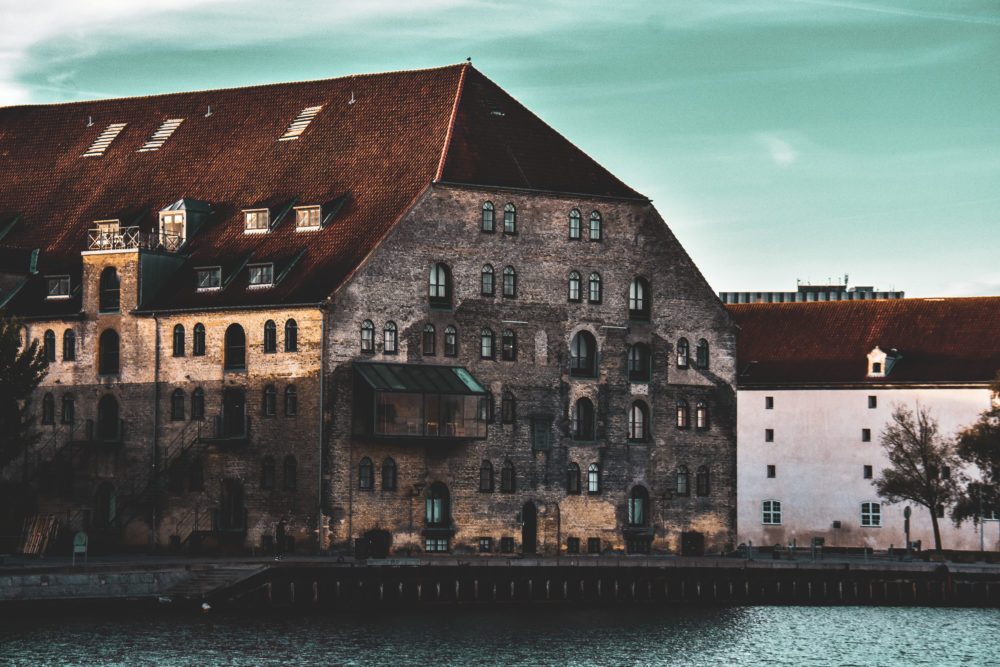
Old Military Building Converted to an Apartment Complex
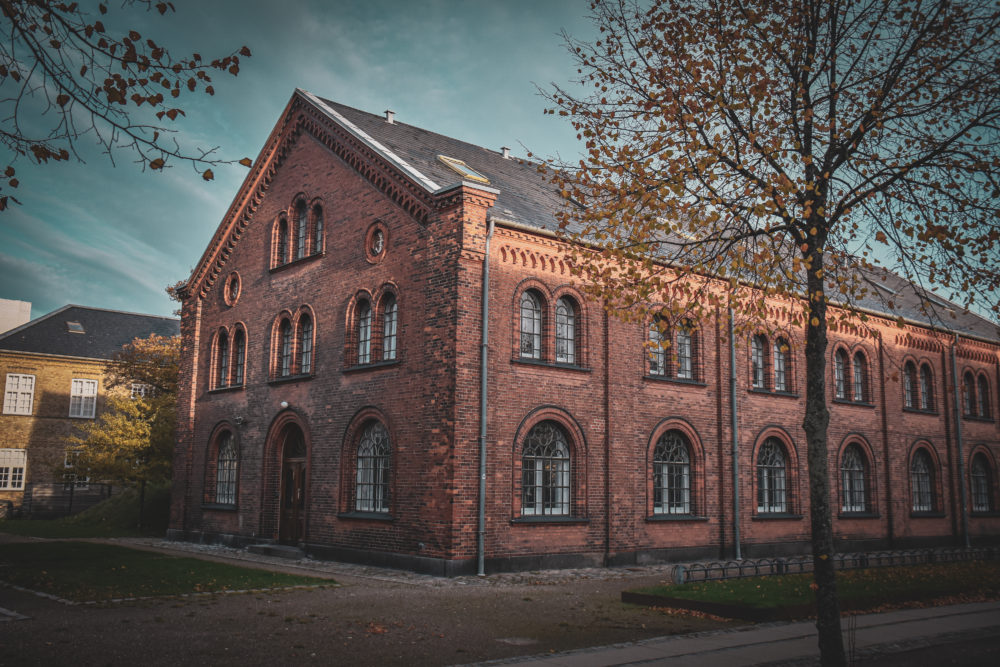
Old Brick Military Buildings
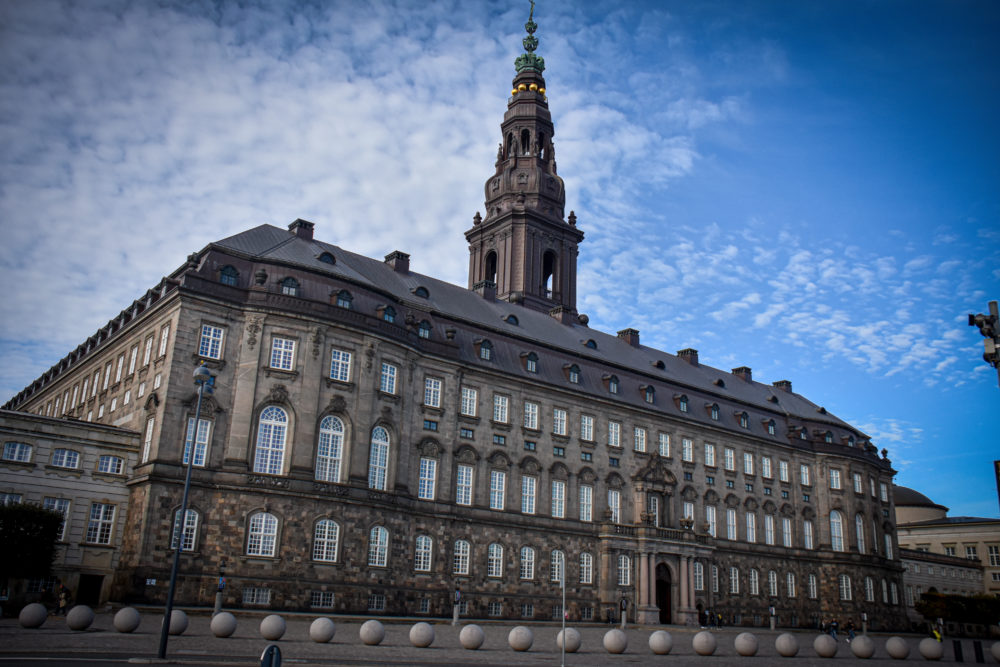
Parliament Building
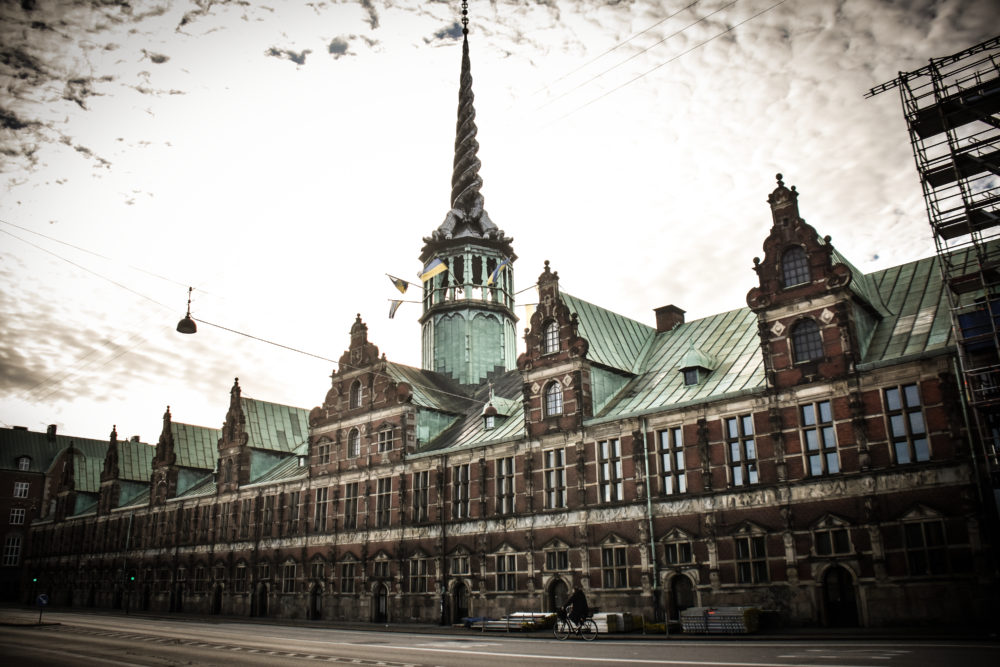
Old Church with Dragons Guarding its Spiring Tower
Many of the old brick buildings were covered in lush vegetation and surrounded by beautiful gardens and oak trees.
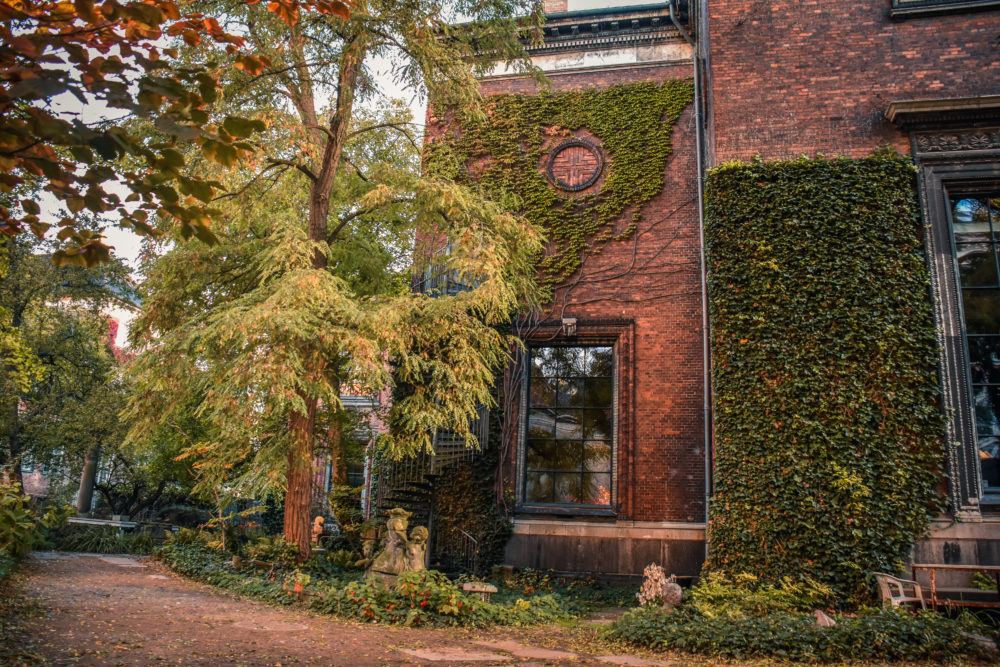
A private garden we walked into
You never know what kind of discoveries you will make when you just wonder the streets blindly like this one of the murals of an old theatre for the king built-in the early 1900s/ One of the side streets leads directly below the building with its lit-up social realism murals at night.
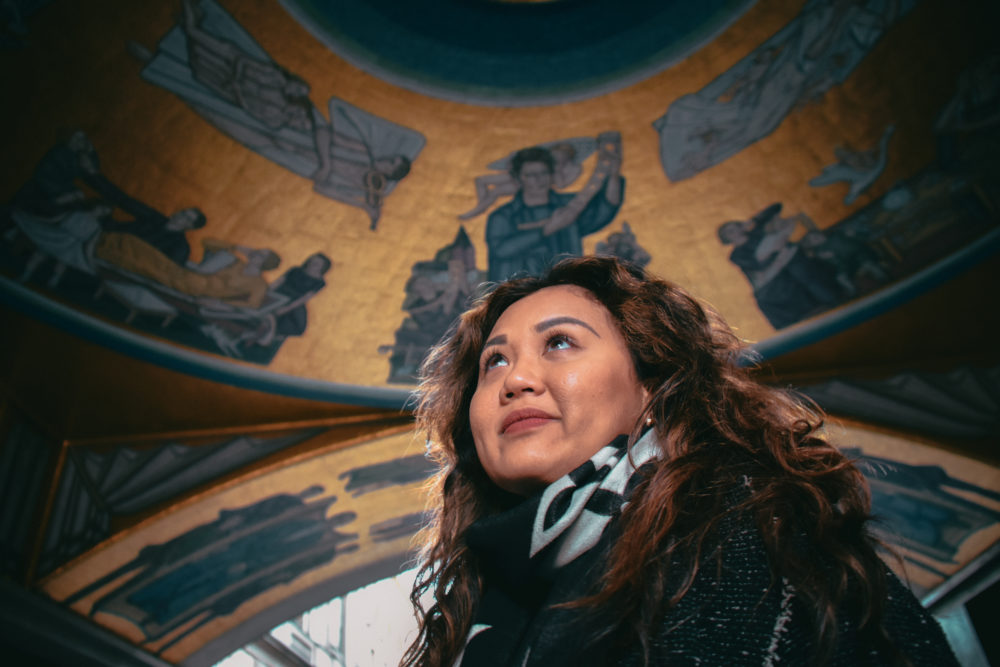
Paula under the theatre murals
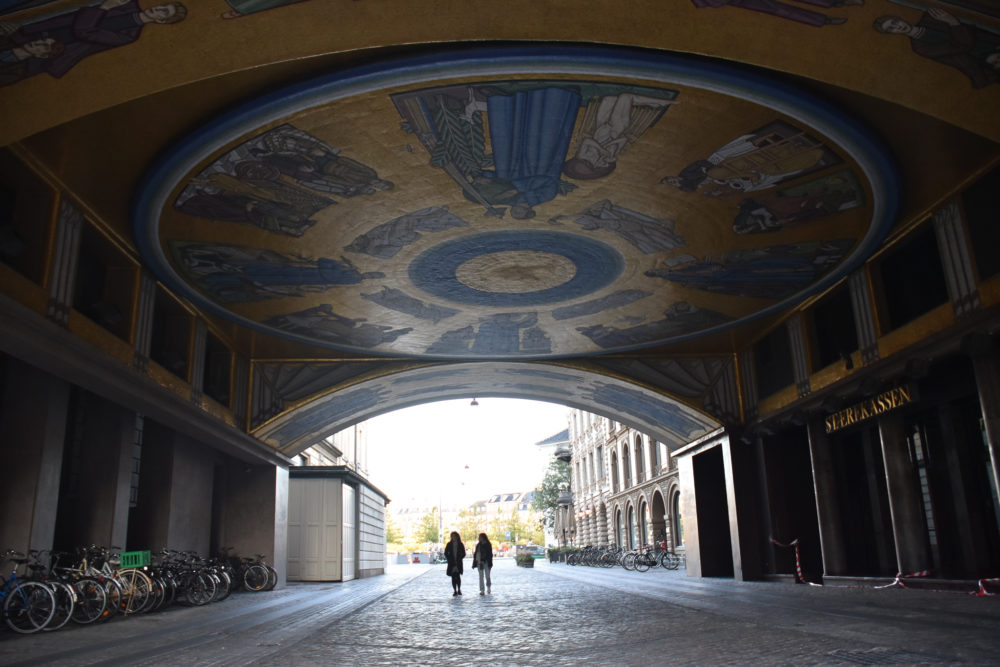
Early 1900 theatre murals
Visiting the Sovereign Hippie Micronation of Christiana
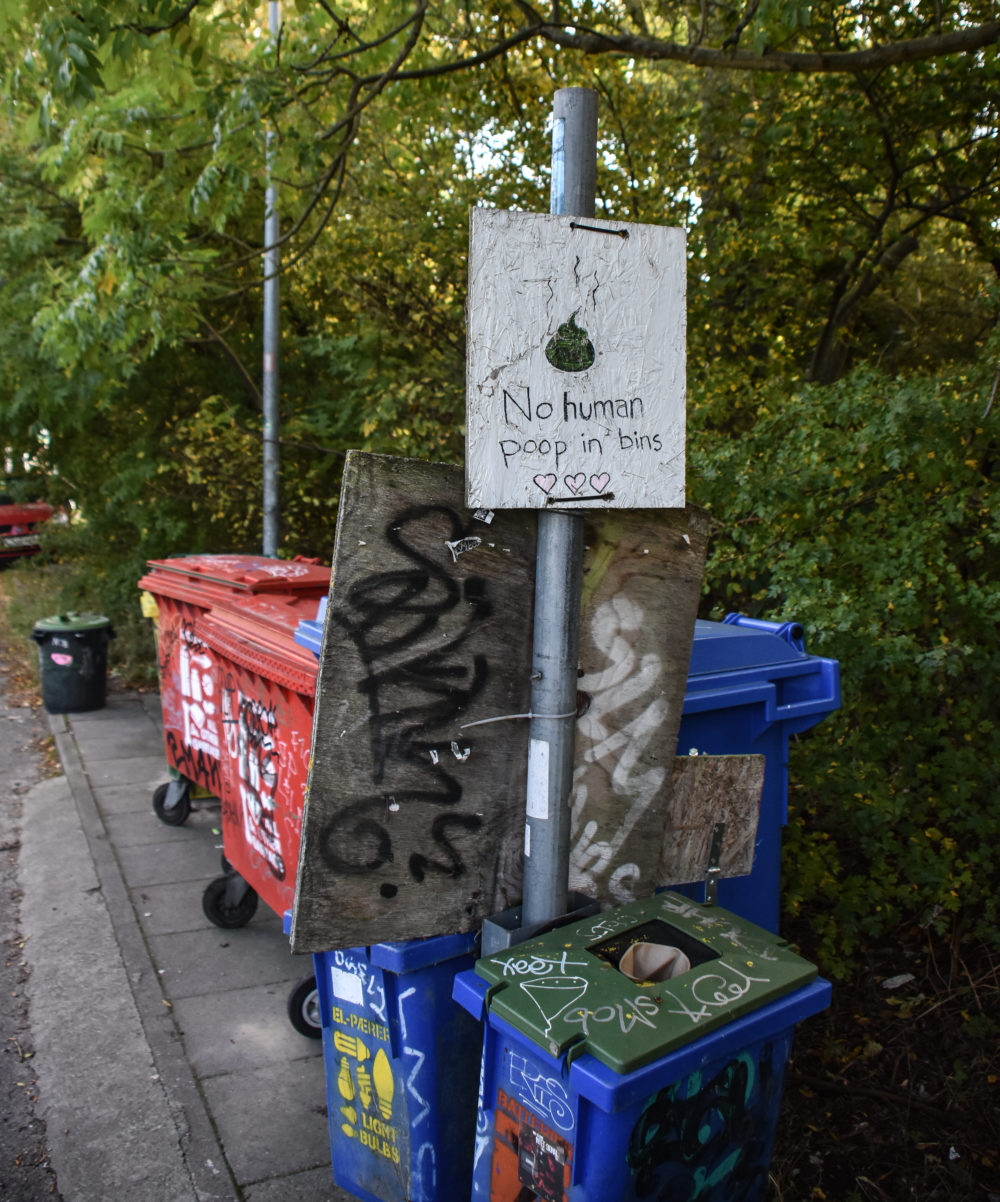
Street signs asking pedestrians not to leave human feces in the garbage cans
Since our hotel was only a few miles away from Christina, we decided to walk there. Christiana was an old, abandoned cluster of military and industrial buildings that were claimed by a community of squatting hippies in the early 70s. The old, abandoned buildings were remodeled with a unique artistic flare, and very interesting and amazing streets art. Christiana’s occupants declared it a sovereign community separate from the governance of Denmark, where they didn’t have to pay taxes and could use and sell drugs freely.
The community subsequently created its own rules, some of which are no vehicles inside, and no photos of many areas and its inhabitants. The open drug has trade led to many conflicts with the government including police raids over the years. This is one of the main reasons why photography is heavily discouraged in the community. These days as part of a negotiation with the government, the community has raised money to collectively purchase the land and is no longer squatting. In Exhange the government has jurisdiction over the land, but the community still maintains many of its rules.
Before I arrived at Christiana, I figured a community of squatters doing drugs to resemble the skid row of San Francisco with rows of homeless tents and needles lying on the streets next to mounds of feces, but Christiana was nowhere near this kind of image. It is clean, naturesque, and many of the buildings are well kept. These days Christians with its quirky houses, and street art draws a lot of tourists. In some ways Christiana reminded me of Slab City in southern California-another military facility that was abandoned and became another squatter artistic community. Christiana still definitely has a feeling of self-rule. Many of the buildings still retain a rustic and almost abandoned appearance. To enter, the community, you need to pass through a gate with a sign declaring you have left the European Union. Since electricity is not connected to many buildings, firewood was being burned for cooking and heat in the cool morning. There were a few bicyclists on the well paved sidewalks and masterful graffiti murals were commonplace. We avoided offending anyone by taking photos in the presence of any of the locals and visited with no issues. A local informed me the area is slowly gentrifying now that Christiana has brokered a new agreement with the local government to allow some new apartment building construction in exchange for more liberties regarding cannabis usage. Inevitably the area under the pressures of urban growth will change and lost some of its identity over time.
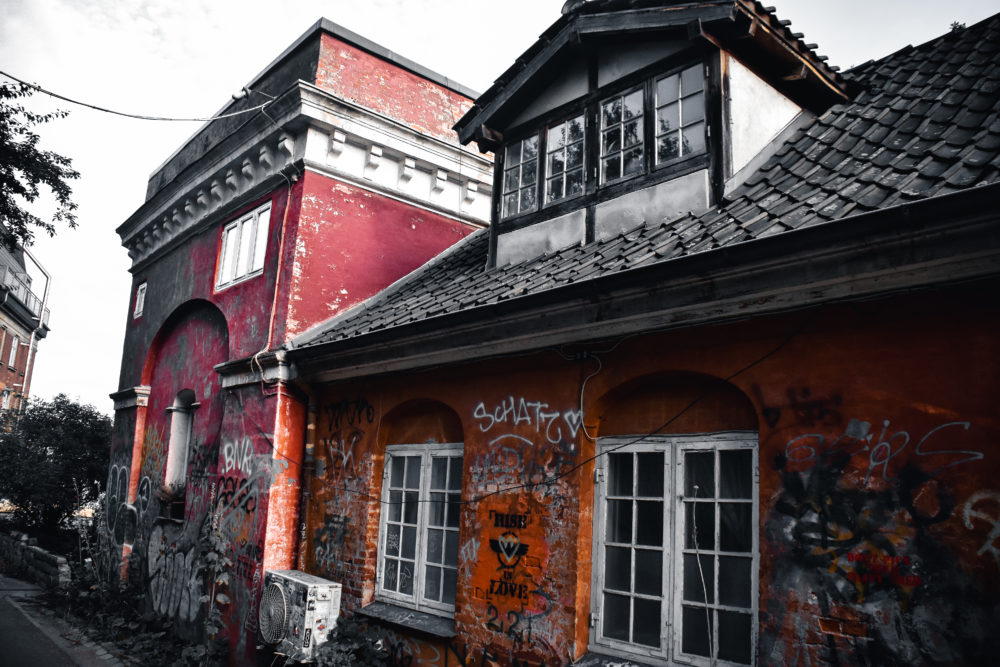
Old early 1900’s era buildings
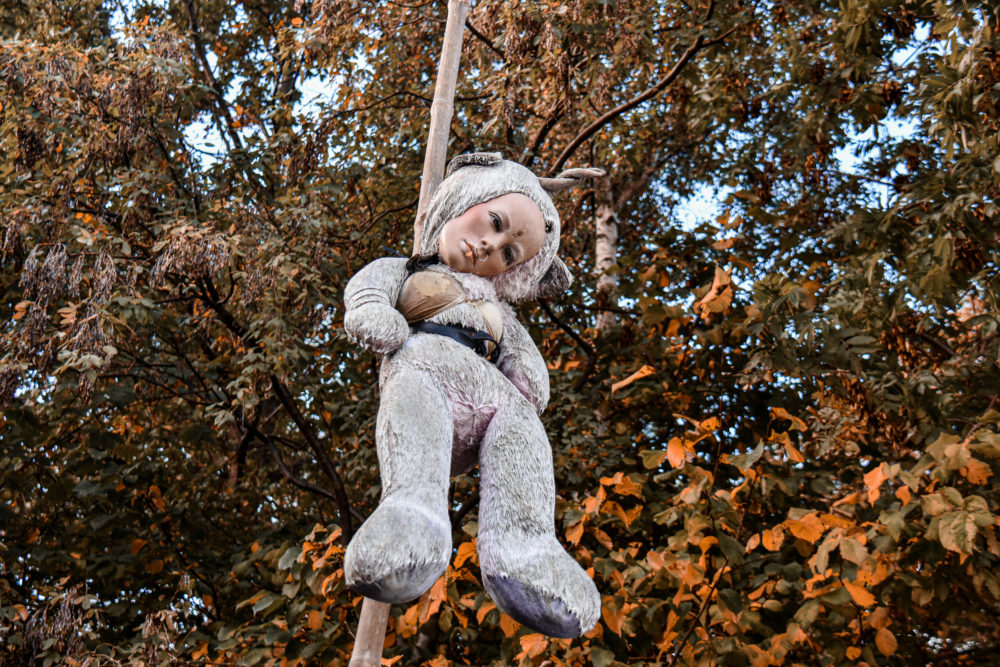
Creepy hanging doll from one of the buildings adding to the quirkiness of the place
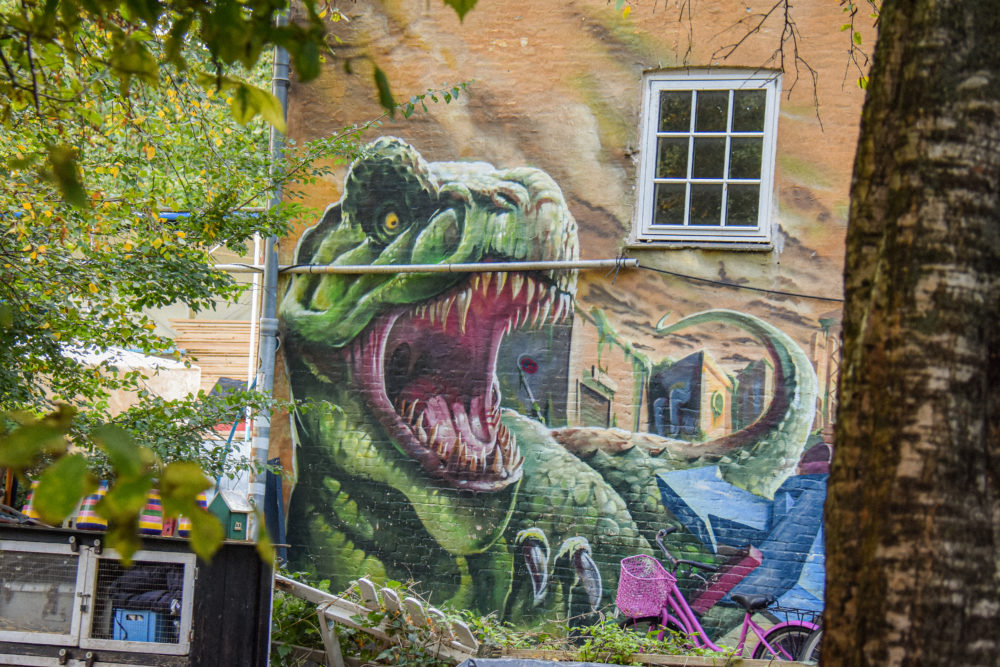
Incredible murals
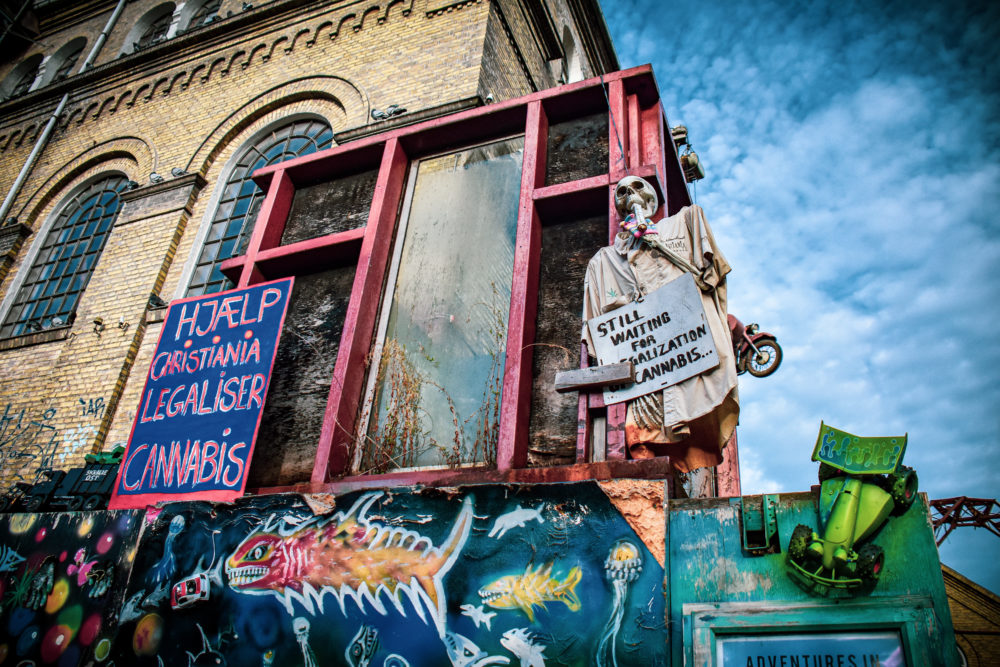
Saw these signs and graffitii demanding legalizations of mairijuana on the side of a brick building with broken glass windows that had a motorcycle hanging from the roof by a rope.
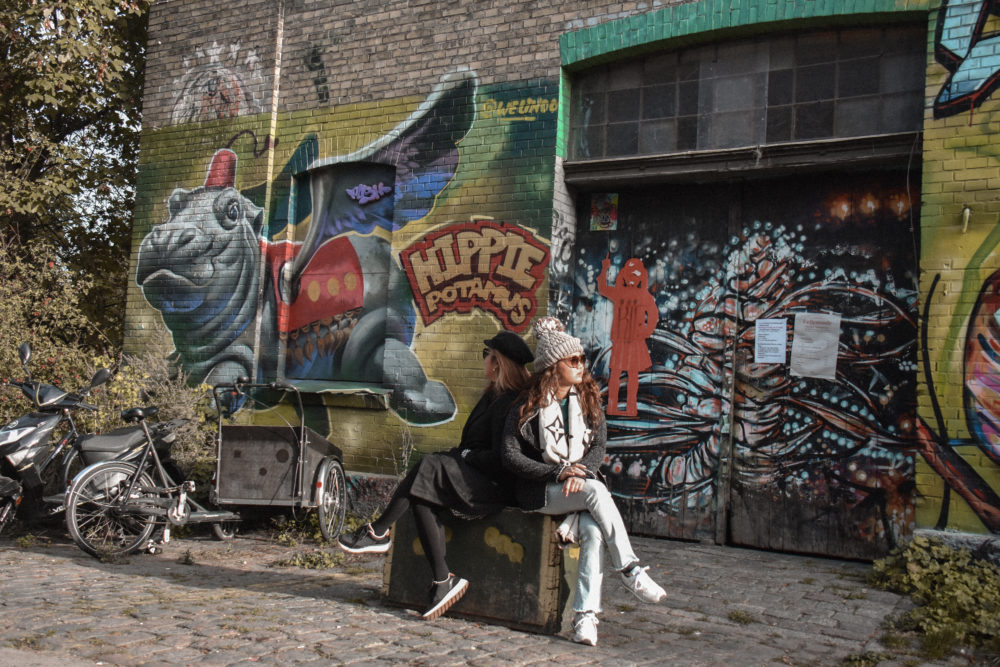
Paula and her mom in front of a mural of a hippo
After visiting Christiana, we took an hour-long tourist boat cruise through the city’s main waterways and had lunch before departing in the afternoon to Barcelona, Spain. There was one building that we could see in the distance that I hoped to visit but we just didn’t have time for it. It was the landfill incineration building that generates power from the heat produced from incinerating the city’s trash. Nothing goes to waste. Trash is used to create electricity and even space on the building is utilized for recreation. The building is hundreds of feet tall and sloped with a green carpet of fake grass that is designed after ski slopes for skiing. A kind of ski was designed for the fake grass materials and the public is allowed to ski down from the top of the building. The other side of the building serves as a rock-climbing wall, and there is a coffee shop at the top where customers can enjoy a sweeping view of the city. Copenhagen was a very nice city that we all agreed we could have spent more time visiting.

